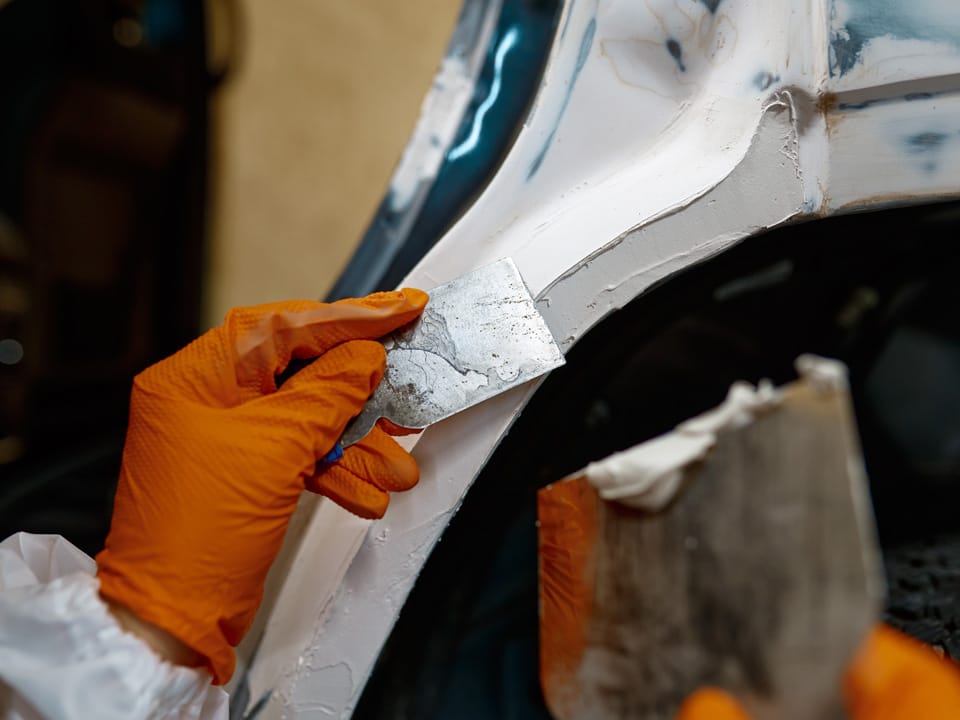


Standard Putty with aluminum is a high quality filling putty enriched with aluminum flakes and created to meet the needs of professional applications. This product is the ideal choice for the repair and finishing of metal surfaces , as it offers perfect adhesion , high mechanical resistance and superior protection against corrosion. Its unique formulation guarantees extraordinary results on higher thicknesses, making it a must have for car enthusiasts looking for the best for their vehicle.
Discover the entire line of The Care putties.



Standard Putty with aluminum is the result of advanced technological innovation, which ensures perfect adhesion to surfaces. Its exceptional corrosion resistance makes it the ideal choice for the deepest and most difficult repairs. The leveling process with a spatula and subsequent sanding gives an impeccable finish which greatly facilitates the subsequent application of a finishing putty such as Standard Putty white and Standard Putty gray or painting. A must have for all car lovers looking for high quality products. Before application it is recommended to clean the surfaces with Degreaser and TNT Cloth non-woven cloths.








In the world of small DIY car repairs, the application of putty is often used to repair small damages, dents or superficial bumps on the car body. Here's how you can apply stucco correctly.
Materials needed:
Procedure:
Remember that car repair putty is mainly used for light damage or superficial dents.
To guarantee high-quality results, we recommend The Care putty collection which offers a wide range of solutions for small DIY repairs of different materials and surfaces.
These are very high quality fillers, successfully on the market for 60 years, chosen by thousands of professionals, specifically designed to correct imperfections and small marks on the bodywork and other surfaces.
They are all two-component putties, with the catalyst already included in the package, which can be used with the appropriate set of Putty Knife spatulas of different sizes.
Let's discover them briefly together:
Read also:
Car repair putty can be used to repair small damages, dents, streaks, pits or other surface imperfections on the car body.
Some of the most common cases in which you can apply stucco to repair minor damage are:
It is important to note that putty is best suited for small repairs and superficial damage. If you have more serious or extensive damage, such as deep dents or structural damage to the bodywork, professional assistance may be necessary. The correct application of stucco requires skill and patience to obtain high-quality results, as it is a process of some complexity.
We have seen some examples of cases in which the use of repair putties is advisable, but on which surfaces can it be done?
Here are examples of practical application of car repair putty on different types of surfaces:
The types of surfaces where putty can be applied are different and cover a wide range of materials common in automotive construction. However, the size and complexity of the damage will determine whether the repair can be handled DIY or will require assistance from an automotive or marine professional.
To guarantee high quality results, today we recommend The Care putty collection which offers a wide range of solutions for small DIY repairs of different materials and surfaces.
These are very high quality fillers, successfully on the market for 60 years, chosen by thousands of professionals, specifically designed to correct imperfections and small marks on the bodywork and other surfaces.
They are all two-component putties, with the catalyst already included in the package, which can be used with the appropriate set of Putty Knife spatulas of different sizes.
Let's discover them briefly together:
Read also:
You might also like